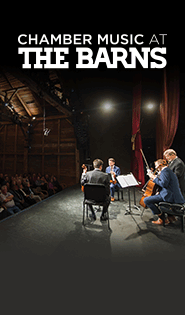Baltimore Symphony returns to the Meyerhoff for thrilling program under Stasevska

Dalia Stasevska conducted the Baltimore Symphony Orchestra Saturday night at Meyerhoff Symphony Hall. Photo: Jarmo Katila
The Baltimore Symphony Orchestra is back. The ensemble’s 2019-2020 season already had felt like a minor miracle, salvaged after a protracted labor dispute between musicians and management. Then during the long pandemic closures, Marin Alsop stepped down from the post of music director, to be replaced by James Conlon as artistic adviser for an initial three-year period.
After all that upheaval, on Saturday night the BSO took the stage in Meyerhoff Symphony Hall and live music returned to the subscription series.
This performance was originally scheduled to take place in the Music Center at Strathmore. The BSO had to relocate the first several weeks of its Strathmore series to the Meyerhoff, because of an ongoing labor dispute between Strathmore and IAFM Local 868, the union that represents Strathmore’s ticket office employees. A small but valiant crowd made it to Charm City anyway.
Dalia Stasevska, in her BSO debut, took the podium to open the new season. The Finnish conductor, born in Ukraine, previously served as assistant conductor to Paavo Järvi at the Orchestre de Paris and as principal guest conductor for the BBC Symphony Orchestra. This season she took up the post of chief conductor of the Lahti Symphony Orchestra, with a contract for three seasons.
She opened the program with an intriguing new work, Andrea Tarrodi’s Wildwood, which received its world premiere in 2018 with the Royal Stockholm Philharmonic.
An evocation of majestic oak trees, from their wide-ranging roots to their reaching branches, Wildwood lumbered slowly at first. A long-breathed line in the violas and cellos arched over the distant thunder of the bass drum. Brass clusters soared in and out of the texture. Meandering melodies clashed gently with oscillating woodwind lines, slightly dissonant in a way that was reminiscent of Britten’s Sea Interludes.
Tarrodi, who has spoken publicly of her synesthesia, worked with a broad palette of colors in a largely tonal style. Huge swells fueled by vast percussion and amassed brass recalled the symphonic style of Sibelius at times. Although the piece perhaps runs too long, Tarrodi’s variety of texture and tempo held interest. The final section, an eerie lullaby begun by harp and glockenspiel, hung in the ensuing silence.

Randall Goosby. Photo: Jeremy MItchell
The other BSO debut of the evening was American violinist Randall Goosby, tapped as soloist for Max Bruch’s Violin Concerto No. 1. In the opening and closing cadenzas of the first movement, Goosby drew forth a demure, honeyed tone from the 1735 Guarneri del Gesù violin. Stasevska, who tends to become overly broad and insistent with her gestures at full dynamics, was clearly to blame for the balance problems with the orchestra overwhelming Goosby at times.
The young violinist excelled in the slow movement, his sugary, romantic rubato supported with beautiful restraint by the BSO. Goosby’s sound was rich in the low passages of the solo part, but shortcomings in intonation appeared in strained higher passages, including in the many double-stops of the finale. A hearty ovation merited a spirited encore, Louisiana Blues Strut, a cakewalk by Coleridge-Taylor Perkinson, one of the African-American composers featured on Goosby’s debut album with Decca.
Stasevska concluded this worthy program with Sibelius’s Second Symphony. Her interpretation emphasized speed and dynamic power over subtlety, as both first and last movements moved too fast to catch many delicate details. Even so, there is no questioning the excitement of the roiling sounds the BSO produced, from the blazing brass to the wall of creamy violin tone.
In this work Stasevska conducted with utter clarity, making the pizzicato sections of the first movement, for example, supremely unified even at a clip. As if to emphasize the individuality of the approach, Stasevska took the second movement initially at a glacial pace. By way of a sweeping accelerando, however, the movement grew in tension and excitement. Sibelius, who began the work during a stay in Italy, when he was interested in both Dante and the Don Juan story, put some of those ideas into this turbulent movement.
The third movement suited the conductor’s impetuous temperament, leading to an explosive, quicksilver Vivacissimo, which framed the tragic slow middle section featuring woodwind and cello solos. Assistant principal flutist Christine Murphy was especially strong, filling in on the first flute part. (Her colleague, principal flutist Emily Skala, was dismissed from the BSO this summer for continued violations of several policies, in accordance with the orchestra’s Collective Bargaining Agreement.)
In the Finale, the BSO took to the rollicking tempo choices Stasevska presented, like a thoroughbred delighted to run free. Visceral excitement in the sound of this exultant movement was the benefit, even when the coda seemed stretched out almost past the breaking point. Those potentially spine-tingling Sibelius swells of orchestral crescendo have rarely been so thrilling.
Little surprise, perhaps, that the conductor has a personal connection to the great Finnish composer. Stasevska is married to Lauri Porra, the bass guitarist for the Finnish power metal band Stratovarius. He is also the great-grandson of Jean Sibelius.
The program will be repeated 3 p.m. Sunday at Meyerhoff Symphony Hall. James Conlon conducts the BSO in William Levi Dawson’s Negro Folk Symphony and Alexander von Zemlinsky’s Die Seejungfrau 8 p.m. October 1 and 2. bsomusic.org


